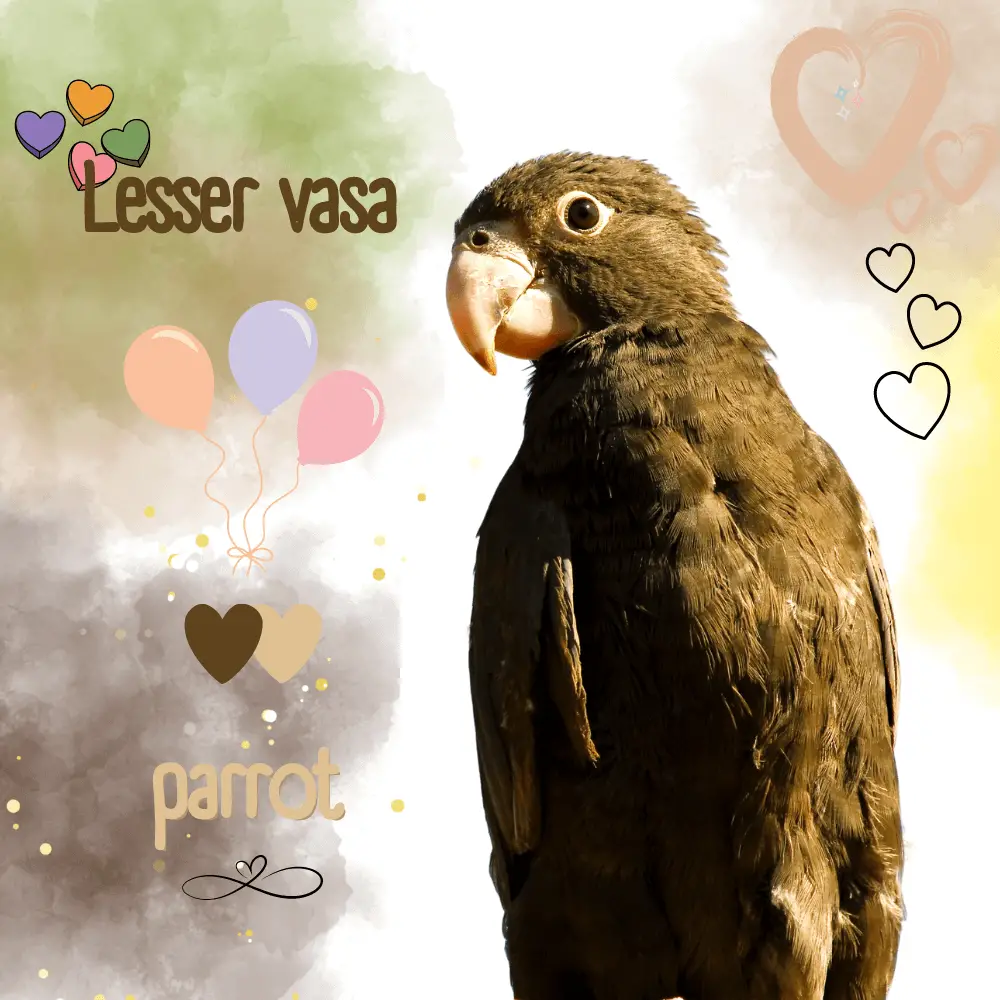Pale gray flight feather background. From above, the tail color is brown-black; below, light grey: Dark subterminal band.
The horn-colored bill, plus off-white to modify the molt; dark brown iris: gray-brown peri ophthalmic ring. (does not reach the top); dark brown legs.
Without sexual dimorphism.
Immature paler than adults with pale under tail-coverts and a yellowish tint in the bill; Tips of the tail feathers pale gray.
- Order : Psittaciformes
- Family : Psittaculidae
- Genus: Coracopsis
- Scientific name : Coracopsis nigra
- Quote : ( Linnaeus , 1758)
- Protonimo : psittacus Niger
-
Madagascar
-
Loving, Playful, Intelligent
-
34 years
-
35 to 40 cm
Subspecies
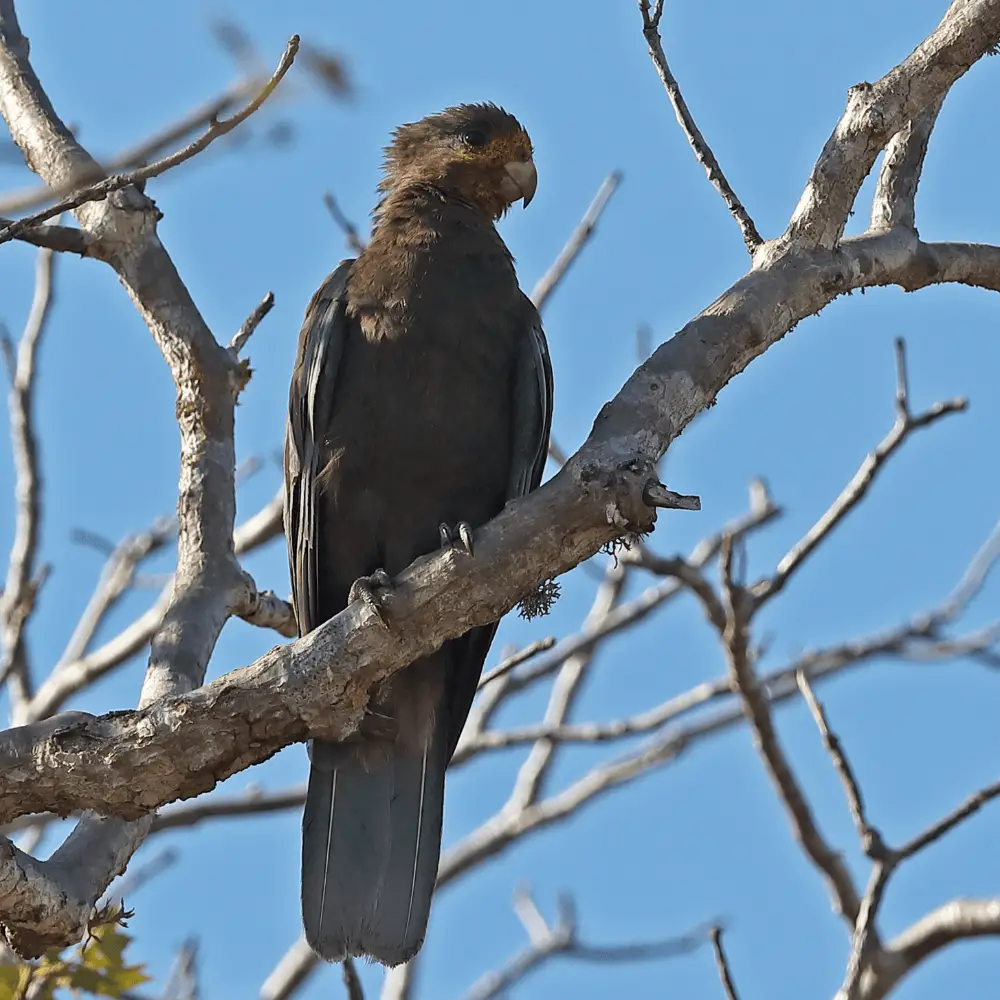
-
Coracopsis nigra libs
( Bangs, 1927) – Paler and with the underparts Mrs. Browner this nominal species; tinted blue-gray back. No dark subterminal band on the tail.
( Bangs, 1927) – Found in western Madagascar.
-
Coracopsis nigra nigra
( Linnaeus, 1758) – nominal species
( Linnaeus, 1758) – nominal species
-
Coracopsis nigra sibilans
( Milne-Edwards & Oustalet, 1885) – Smaller, about 30 cm, and paler than the nominal species.
( Milne-Edwards & Oustalet, 1885) – They live in Grande Comore Oui Anjouan on the island of Comoros
Habitat
The resident Lesser vasa parrot with some daytime foraging movements.
It is found in a wide variety of forest and savannah areas, including human-modified ecosystems, woodlands of towns and villages, as well as primary forests, at sea level up to 2,050 m d altitude.
You can learn more about dense forests, swamp forests (including mangroves), and scrubland, which the Grand Vaza, to avoid large areas of humid forests.
Usually seen in small noisy groups, flapping or sitting on treetops; active on full moon nights.
In Seychelles, however, the Lesser vasa parrot rarely forms herds and is usually seen alone or in pairs, except when food locally they are plentiful.
Does not know of mixed-form herds with the Grand Vaza.
Distribution
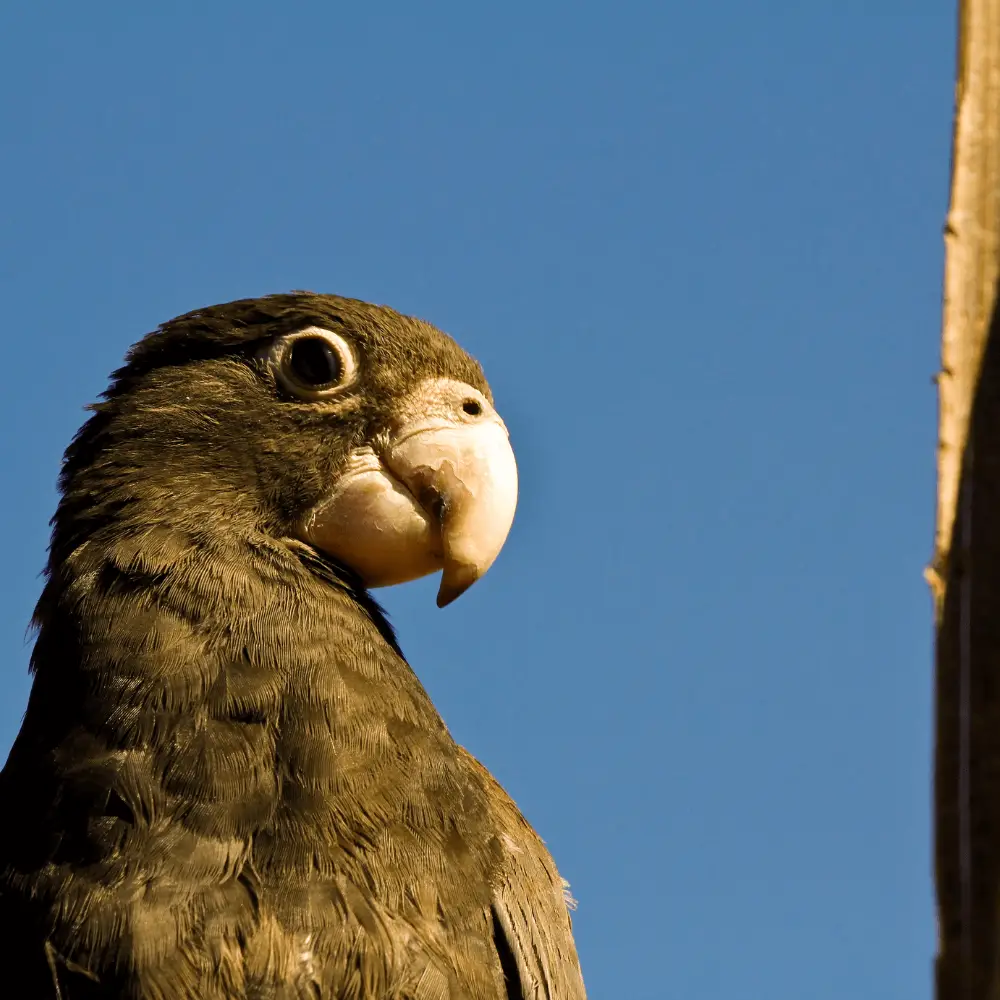
Endemic to Madagascar, the Comoros archipelago ( Grande Comore Oui Anjouan ), and the island of Praslin ( Seychelles ), where it was probably introduced.
Nest in the hollow tree trunk or in a branch usually precedes the 15 m.
Reproduction is probably from November to February.
Clutch from 2 to 8 eggs.
Food
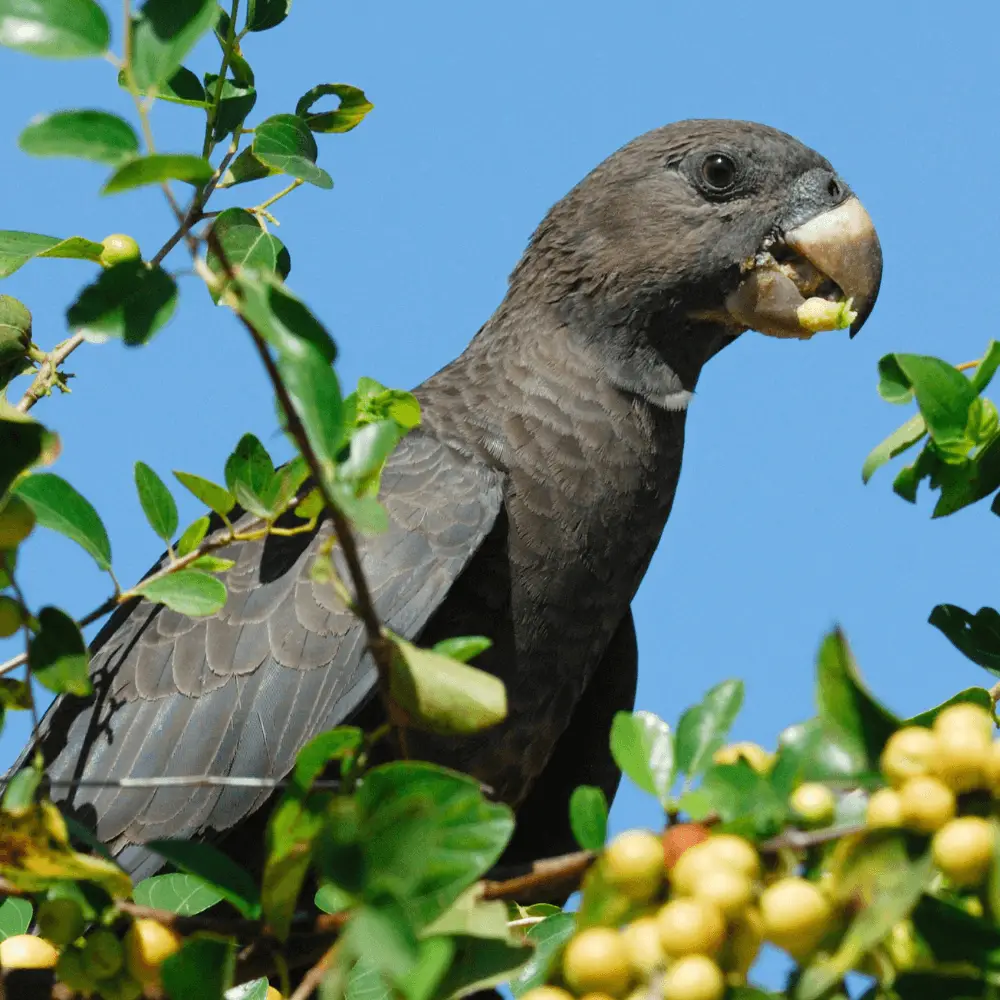
The Lesser vasa parrot feeds on seeds, berries, fruits, and nuts; more frugivorous than Grand Vaza.
Specific items reported on their diet include fruits of Afzélia bijuga Oui Chassalia, seeds of Cinnamosma fragrans, flowers of Symphonia, and certain types of leaves.
In Madagascar, according to sources, He reported consumption of insect galls on the part of the Lesser vasa parrot.
They attack crops and in Comoros they are the real pests in cocoa plantations, feeding on immature pods.
The main food of the people of Praslin include: Verschaffeltia splendida , Averrhoa bilimbi , Phoenicophorium borsigianum , Deckenia nobilis , Chrysobalanus icaco Yes Ficus rubra .
Endangered
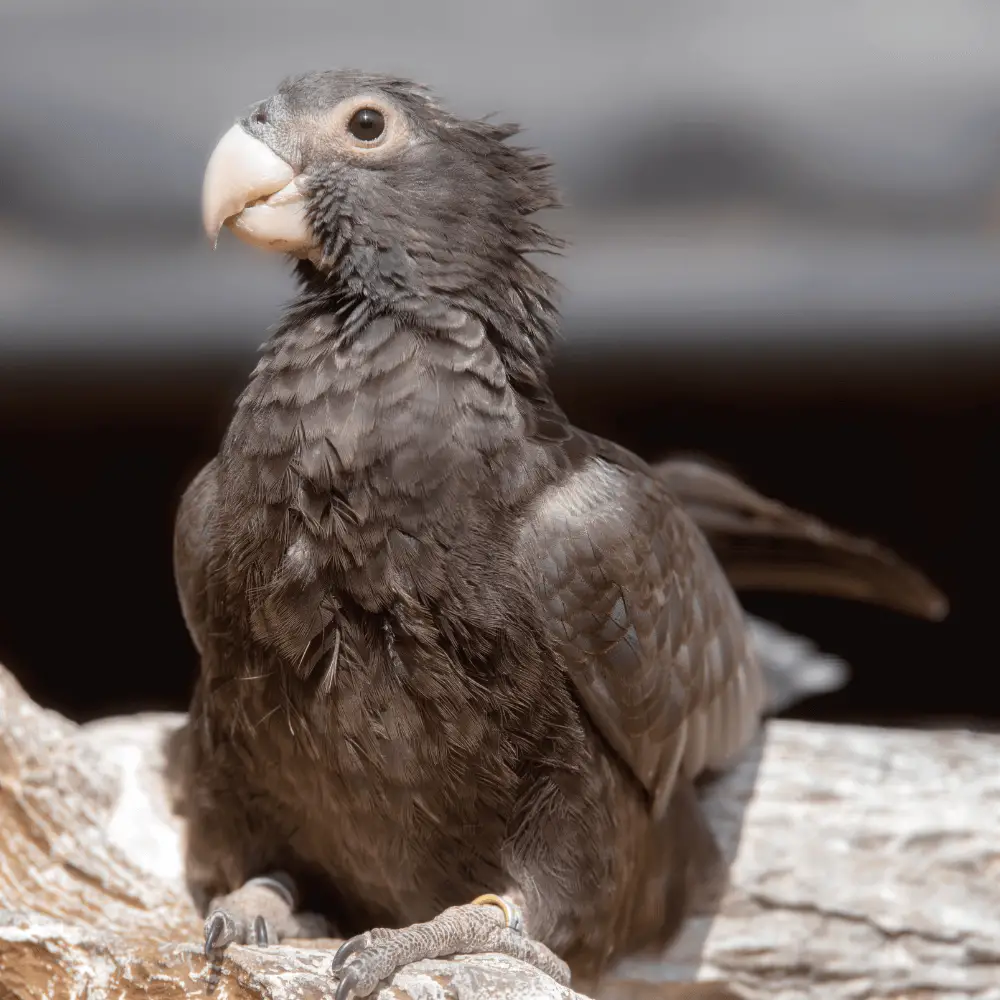
• Current IUCN Red List: Least Concern
• Demographic trend: Stable
The species that are found in Madagascar Yes the Comoros they are generally described under the common name.
Despite their intense persecution, apparently, they are not at risk and are distributed in many protected areas of Madagascar.
The size of the world’s population has not been quantified.
The subspecies from the island of Praslin ( Seychelles ), found in the Vallée de Mai Nature Reserve, is in critical condition (probably less than 100 birds ). Competition for nesting sites with common mine (Acridotheres tristis) These may be threats from the remaining birds.
Lesser vasa parrot in captivity
It is possible to keep them in common with its kind but outside the breeding season. At first, he can be shy. It is an active and nervous parrot, usually extroverted. Once used to people and the environment, it tends to be confided, although it also depends a lot on its breeding method (physical or by hand) and previous experiences.
As a pet, he can be wonderful company, loving, playful, and very intelligent.
As for its longevity, sources they indicate that a specimen lived 34.1 years in captivity.
SOURCE: Avi Birds

